-

Oct
16
Interpretive Summary: Semi-synthetic reference diets containing crystalline amino acids at 120% of recommendations for adult dogs are not appropriate for estimating the protein quality of ingredients used in extruded diets

Metabolic availability (MA) of an amino acid (AA) is the fraction of a dietary AA that is digestible and available for protein synthesis. Chicken meal (ChM) and peas are commonly used protein sources in extruded dog foods, with peas containing more fiber. Moreover, the essential AA methionine (Met) is first limiting in peas.
Read more
-

Oct
16
Interpretive Summary: Conductive cooling and Moringa oleifera supplementation of heat stressed sows during late gestation and lactation alters the cheek cell lipidome of neonatal pigs
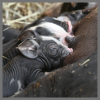
High environmental temperatures detrimentally affect the productive performance and welfare of lactating sows. Reduced litter growth is linked to decreased sow milk production, but there may be other factors related to maternal heat stress that impact neonate development. For example, heat stress can increase the risk for lipid damage.
Read more
-

Oct
16
Interpretive Summary: Early-life vitamin A supplementation modulates the skeletal muscle transcriptome and intramuscular fat deposition in feedlot-finished beef steers
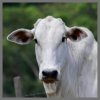
The amount of fat within beef muscle, known as intramuscular fat (IMF) or marbling, is a key factor that influences meat tenderness and juiciness—two key attributes that directly impact consumer satisfaction. The development of IMF occurs mainly during late pregnancy and in the first months after birth, a period called the “marbling window”. Research suggests that specific nutrients such as vitamin A may enhance this process at early stages of life.
Read more
-

Oct
15
The Giving Herd - ASAS Foundation Newsletter - October 2025
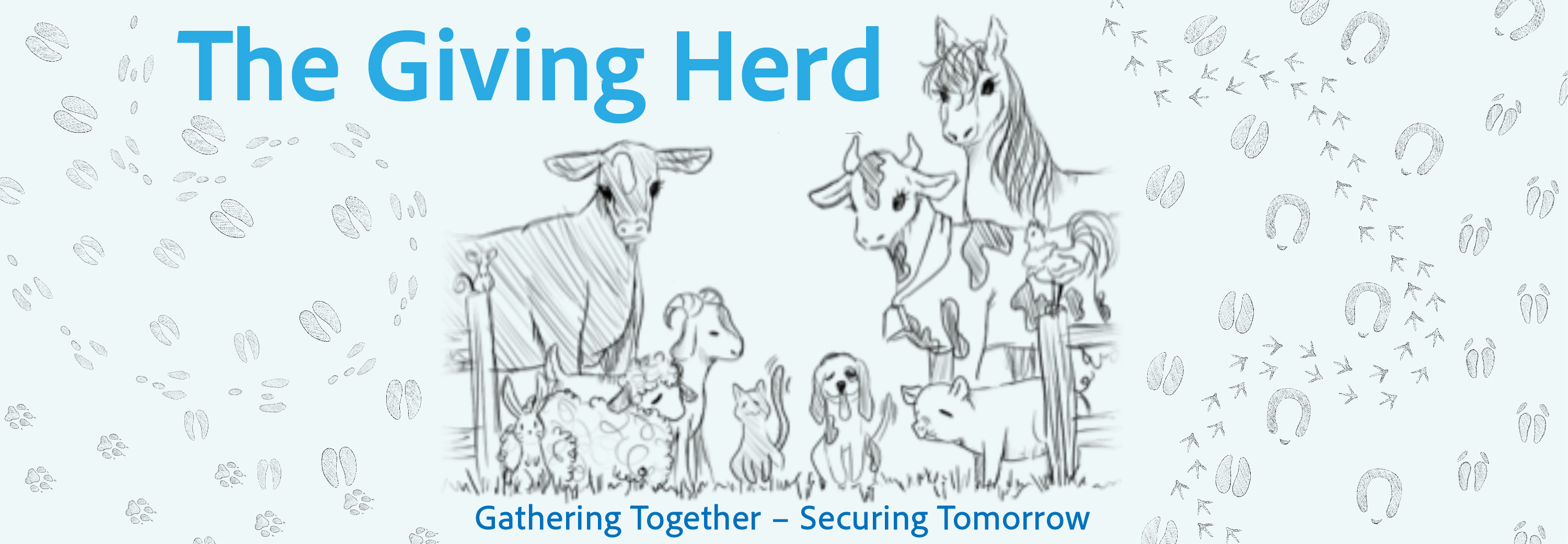
The October Edition of The Giving Herd, an ASAS Foundation Newsletter
Read more
-

Oct
09
Interpretive Summary: Green tea extract complex as a phytogenic supplement to reduce bile salt hydrolase activity and enhance growth performance in weaning pigs
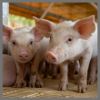
When piglets are weaned, they often experience stress, diarrhea, and slower growth. To manage these challenges, antibiotics or zinc oxide are commonly used, but concerns about resistance and environmental impact have prompted interest in safer and natural alternatives. This study tested a plant-based supplement made from green tea extract, butyric acid, and vitamin K (called GBK) on young pigs.
Read more
-

Oct
09
Interpretive Summary: Adaptive high-distance RGB imaging for accurate dairy cow feed intake estimation
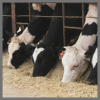
This study presents a computer vision–based method to measure the total feed intake of dairy cows to help farmers manage feeding practices more efficiently. The system uses an overhead camera to capture color images of the feed pile and analyze changes over time.
Read more
-

Oct
09
Interpretive Summary: Folic acid supplementation alleviates donor cattle’s heat stress and improves in vitro embryo production efficiency in summer
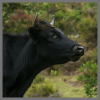
This new study explores how to improve OPU-IVF efficiency in high-quality Wagyu cattle exposed to high temperatures. Systematic folic acid supplementation in 20 clinically healthy Wagyu heifers under controlled heat stress for 20 d significantly reduced inflammatory signaling molecules linked to heat stress, while enhancing their antioxidant capacity and increasing estrogen levels.
Read more
-

Oct
09
Interpretive Summary: Effects of intravenous lipopolysaccharide administration on physiological and ruminal responses that modulate feed intake in beef cattle
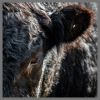
Inflammation is an important response of the innate immune system, but feed intake is reduced in cattle experiencing inflammatory reactions. Acute and chronic inflammation leads to appetite depression via neural and hormonal mechanisms, and may impair the ability of the rumen in digesting feed via interactions between animal hormones and ruminal microbes.
Read more
-

Oct
09
Interpretive Summary: The serum levels of triacylglycerols, nonesterified fatty acids, and beta-hydroxybutyrate as markers of reproductive capability of primiparous dairy cows
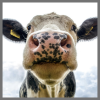
After giving birth to a calf, cows, like other mammals, experience a period of very high energy expenditure, which is often associated with negative energy balance (NEB) or metabolic stress. NEB, among others, decreases the reproductive ability of the cow. In dairy cattle, it is required that both a high milk yield is achieved, and the cow is able to conceive again as soon as possible.
Read more
-

Oct
09
Interpretive Summary: Leveraging data from commercial cattle for genetic improvement– an international perspective
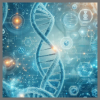
Genetic evaluation is the process of combining individual animal performance and ancestry data along with information on contributing non-genetic effects, to estimate the genetic merit of individuals. This is a routine process in all developed countries, with the outcome being estimates of genetic merit for individual animals.
Read more
-

Oct
09
Interpretive Summary: A primer on sequencing and genotype imputation in cattle
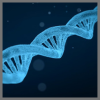
The introduction of genomics into genetic prediction tools has led to a significant increase in selection accuracies across livestock populations. This innovation was enabled by the development of high-density genotyping arrays in the late 2000s. These tools have been used to generate millions of genotypes since.
Read more
-

Oct
02
Interpretive Summary: Circular bioeconomy in dairy production: Ricotta cheese exhausted whey, from a byproduct to bioproducts, a case study
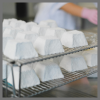
The global dairy sector produced 930 million tons of milk in 2022, which was processed into a wide range of dairy products for human consumption. In 2023, 160.8 million tons have been produced by EU 27, the largest global producer, followed by United States.
Read more
-

Oct
02
Interpretive Summary: Circular bioeconomy in livestock production: harnessing crop by-products in MERCOSUR/MERCOSUL
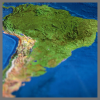
The increasing global population and the rising demand for sustainable food systems have highlighted the potential of agricultural co-products as viable alternatives for enhancing livestock production efficiency (FAO, 2017). Among agricultural commodities, by-products derived from agro-industrial processing present an economically and environmentally sustainable solution, aligning with the principles of a circular economy (Nath et al., 2023).
Read more
-

Oct
02
Interpretive Summary: Circular bioeconomy approaches for livestock manure and post-consumer wastes: opportunities for biofertilizers and bioenergy
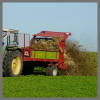
There is increasing interest in circular bioeconomy practices, technologies and products at the intersection of the circular economy and bioeconomy practices that promote more sustainable economic models, functioning within planetary boundaries (Muscat et al., 2021; Rockström et al., 2024). Circular bioeconomy approaches can recover a suite of products from some of the largest organic residue streams in livestock systems and supply chains (Ramirez et al., 2021) including: manures, processing and post-consumer streams (e.g., wastewaters and municipal sewage).
Read more
-

Oct
02
Interpretive Summary: Can circularity support net-zero agriculture: an exploratory case
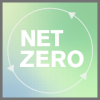
Emissions of greenhouse gases (GHGs), notably CO2 from fossil fuel combustion, are increasingly altering the radiative balance of Earth’s atmosphere, leading to dangerous shifts in global climate (Ripple et al., 2024). In response to this human-inflicted threat, Canada, like other countries, has committed to drastically curtailing its agricultural emissions, having set a target of net-zero emissions by 2050 (Government of Canada, 2024).
Read more
-

Oct
02
Interpretive Summary: Circular bioeconomy: policy and regulatory impacts on livestock production systems
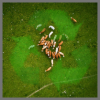
The evolution of the current linear production system into a circular approach, with the use of increased quantities of biomass, requires the development of appropriate policies to encourage and potentially incentivize the circular use of biomass. This development will lead to both the potential use of new materials and allow for the safe use of currently wasted resources from sectors such as livestock production systems, including processing wastes (e.g., whey, wool, wool grease, wastewaters) or manures to produce products, such as feed and fertilizers.
Read more
-

Sep
25
Washington Roundup – September 2025
.png?sfvrsn=485f5ad1_1)
With lawmakers away from Washington the week of September 22nd, they will return on September 29th with little time to avert a government shutdown at the end of the month. On September 17th, House Republicans successfully passed a “clean” continuing resolution by a vote of 217-212. The measure would keep the government funded through November 21st.
Read more
-

Sep
18
Interpretive Summary: The effect of increasing standardized ileal digestible histidine:lysine ratio during lactation on sow and litter performance
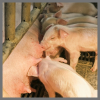
Added histidine (His) in lactating dairy cattle diets has been observed to increase milk production. This suggests that histidine might be a limiting amino acid in lactating dairy cows fed grain and grass silage-based diets. However, there is limited data available on the effects of increasing dietary histidine on performance of lactating sows.
Read more
-

Sep
18
Interpretive Summary: Association of glutamine supplementation during the early suckling period with growth, weaning, and lipopolysaccharide induced stress in low birthweight piglets
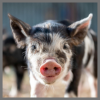
Low birthweight piglets suffer from impaired postnatal development that negatively affects organ function, bodyweight, and health at vulnerable life stages. This leads to increased disease susceptibility and mortality, especially in male piglets.
Read more
-

Sep
18
Interpretive Summary: Vitamin D₃ inhibits proliferation and the early stage of adipogenic differentiation but promotes gene expression and lipid accumulation during the late stage of adipogenic differentiation in intramuscular adipose cells of Korean...

This study investigated the effects of vitamin D₃ on the growth and differentiation of adipose cells derived from muscle tissue in Korean native cattle. Vitamin D₃ reduced cell proliferation during the growth phase, limiting the number of adipose cells.
Read more
 OctInterpretive Summary: Semi-synthetic reference diets containing crystalline amino acids at 120% of recommendations for adult dogs are not appropriate for estimating the protein quality of ingredients used in extruded diets
OctInterpretive Summary: Semi-synthetic reference diets containing crystalline amino acids at 120% of recommendations for adult dogs are not appropriate for estimating the protein quality of ingredients used in extruded diets Metabolic availability (MA) of an amino acid (AA) is the fraction of a dietary AA that is digestible and available for protein synthesis. Chicken meal (ChM) and peas are commonly used protein sources in extruded dog foods, with peas containing more fiber. Moreover, the essential AA methionine (Met) is first limiting in peas.
Metabolic availability (MA) of an amino acid (AA) is the fraction of a dietary AA that is digestible and available for protein synthesis. Chicken meal (ChM) and peas are commonly used protein sources in extruded dog foods, with peas containing more fiber. Moreover, the essential AA methionine (Met) is first limiting in peas. OctInterpretive Summary: Conductive cooling and Moringa oleifera supplementation of heat stressed sows during late gestation and lactation alters the cheek cell lipidome of neonatal pigs
OctInterpretive Summary: Conductive cooling and Moringa oleifera supplementation of heat stressed sows during late gestation and lactation alters the cheek cell lipidome of neonatal pigs High environmental temperatures detrimentally affect the productive performance and welfare of lactating sows. Reduced litter growth is linked to decreased sow milk production, but there may be other factors related to maternal heat stress that impact neonate development. For example, heat stress can increase the risk for lipid damage.
High environmental temperatures detrimentally affect the productive performance and welfare of lactating sows. Reduced litter growth is linked to decreased sow milk production, but there may be other factors related to maternal heat stress that impact neonate development. For example, heat stress can increase the risk for lipid damage. OctInterpretive Summary: Early-life vitamin A supplementation modulates the skeletal muscle transcriptome and intramuscular fat deposition in feedlot-finished beef steers
OctInterpretive Summary: Early-life vitamin A supplementation modulates the skeletal muscle transcriptome and intramuscular fat deposition in feedlot-finished beef steers The amount of fat within beef muscle, known as intramuscular fat (IMF) or marbling, is a key factor that influences meat tenderness and juiciness—two key attributes that directly impact consumer satisfaction. The development of IMF occurs mainly during late pregnancy and in the first months after birth, a period called the “marbling window”. Research suggests that specific nutrients such as vitamin A may enhance this process at early stages of life.
The amount of fat within beef muscle, known as intramuscular fat (IMF) or marbling, is a key factor that influences meat tenderness and juiciness—two key attributes that directly impact consumer satisfaction. The development of IMF occurs mainly during late pregnancy and in the first months after birth, a period called the “marbling window”. Research suggests that specific nutrients such as vitamin A may enhance this process at early stages of life. OctThe Giving Herd - ASAS Foundation Newsletter - October 2025
OctThe Giving Herd - ASAS Foundation Newsletter - October 2025 The October Edition of The Giving Herd, an ASAS Foundation Newsletter
The October Edition of The Giving Herd, an ASAS Foundation Newsletter OctInterpretive Summary: Green tea extract complex as a phytogenic supplement to reduce bile salt hydrolase activity and enhance growth performance in weaning pigs
OctInterpretive Summary: Green tea extract complex as a phytogenic supplement to reduce bile salt hydrolase activity and enhance growth performance in weaning pigs When piglets are weaned, they often experience stress, diarrhea, and slower growth. To manage these challenges, antibiotics or zinc oxide are commonly used, but concerns about resistance and environmental impact have prompted interest in safer and natural alternatives. This study tested a plant-based supplement made from green tea extract, butyric acid, and vitamin K (called GBK) on young pigs.
When piglets are weaned, they often experience stress, diarrhea, and slower growth. To manage these challenges, antibiotics or zinc oxide are commonly used, but concerns about resistance and environmental impact have prompted interest in safer and natural alternatives. This study tested a plant-based supplement made from green tea extract, butyric acid, and vitamin K (called GBK) on young pigs. OctInterpretive Summary: Adaptive high-distance RGB imaging for accurate dairy cow feed intake estimation
OctInterpretive Summary: Adaptive high-distance RGB imaging for accurate dairy cow feed intake estimation This study presents a computer vision–based method to measure the total feed intake of dairy cows to help farmers manage feeding practices more efficiently. The system uses an overhead camera to capture color images of the feed pile and analyze changes over time.
This study presents a computer vision–based method to measure the total feed intake of dairy cows to help farmers manage feeding practices more efficiently. The system uses an overhead camera to capture color images of the feed pile and analyze changes over time. OctInterpretive Summary: Folic acid supplementation alleviates donor cattle’s heat stress and improves in vitro embryo production efficiency in summer
OctInterpretive Summary: Folic acid supplementation alleviates donor cattle’s heat stress and improves in vitro embryo production efficiency in summer This new study explores how to improve OPU-IVF efficiency in high-quality Wagyu cattle exposed to high temperatures. Systematic folic acid supplementation in 20 clinically healthy Wagyu heifers under controlled heat stress for 20 d significantly reduced inflammatory signaling molecules linked to heat stress, while enhancing their antioxidant capacity and increasing estrogen levels.
This new study explores how to improve OPU-IVF efficiency in high-quality Wagyu cattle exposed to high temperatures. Systematic folic acid supplementation in 20 clinically healthy Wagyu heifers under controlled heat stress for 20 d significantly reduced inflammatory signaling molecules linked to heat stress, while enhancing their antioxidant capacity and increasing estrogen levels. OctInterpretive Summary: Effects of intravenous lipopolysaccharide administration on physiological and ruminal responses that modulate feed intake in beef cattle
OctInterpretive Summary: Effects of intravenous lipopolysaccharide administration on physiological and ruminal responses that modulate feed intake in beef cattle Inflammation is an important response of the innate immune system, but feed intake is reduced in cattle experiencing inflammatory reactions. Acute and chronic inflammation leads to appetite depression via neural and hormonal mechanisms, and may impair the ability of the rumen in digesting feed via interactions between animal hormones and ruminal microbes.
Inflammation is an important response of the innate immune system, but feed intake is reduced in cattle experiencing inflammatory reactions. Acute and chronic inflammation leads to appetite depression via neural and hormonal mechanisms, and may impair the ability of the rumen in digesting feed via interactions between animal hormones and ruminal microbes. OctInterpretive Summary: The serum levels of triacylglycerols, nonesterified fatty acids, and beta-hydroxybutyrate as markers of reproductive capability of primiparous dairy cows
OctInterpretive Summary: The serum levels of triacylglycerols, nonesterified fatty acids, and beta-hydroxybutyrate as markers of reproductive capability of primiparous dairy cows After giving birth to a calf, cows, like other mammals, experience a period of very high energy expenditure, which is often associated with negative energy balance (NEB) or metabolic stress. NEB, among others, decreases the reproductive ability of the cow. In dairy cattle, it is required that both a high milk yield is achieved, and the cow is able to conceive again as soon as possible.
After giving birth to a calf, cows, like other mammals, experience a period of very high energy expenditure, which is often associated with negative energy balance (NEB) or metabolic stress. NEB, among others, decreases the reproductive ability of the cow. In dairy cattle, it is required that both a high milk yield is achieved, and the cow is able to conceive again as soon as possible. OctInterpretive Summary: Leveraging data from commercial cattle for genetic improvement– an international perspective
OctInterpretive Summary: Leveraging data from commercial cattle for genetic improvement– an international perspective Genetic evaluation is the process of combining individual animal performance and ancestry data along with information on contributing non-genetic effects, to estimate the genetic merit of individuals. This is a routine process in all developed countries, with the outcome being estimates of genetic merit for individual animals.
Genetic evaluation is the process of combining individual animal performance and ancestry data along with information on contributing non-genetic effects, to estimate the genetic merit of individuals. This is a routine process in all developed countries, with the outcome being estimates of genetic merit for individual animals. OctInterpretive Summary: A primer on sequencing and genotype imputation in cattle
OctInterpretive Summary: A primer on sequencing and genotype imputation in cattle The introduction of genomics into genetic prediction tools has led to a significant increase in selection accuracies across livestock populations. This innovation was enabled by the development of high-density genotyping arrays in the late 2000s. These tools have been used to generate millions of genotypes since.
The introduction of genomics into genetic prediction tools has led to a significant increase in selection accuracies across livestock populations. This innovation was enabled by the development of high-density genotyping arrays in the late 2000s. These tools have been used to generate millions of genotypes since. OctInterpretive Summary: Circular bioeconomy in dairy production: Ricotta cheese exhausted whey, from a byproduct to bioproducts, a case study
OctInterpretive Summary: Circular bioeconomy in dairy production: Ricotta cheese exhausted whey, from a byproduct to bioproducts, a case study The global dairy sector produced 930 million tons of milk in 2022, which was processed into a wide range of dairy products for human consumption. In 2023, 160.8 million tons have been produced by EU 27, the largest global producer, followed by United States.
The global dairy sector produced 930 million tons of milk in 2022, which was processed into a wide range of dairy products for human consumption. In 2023, 160.8 million tons have been produced by EU 27, the largest global producer, followed by United States. OctInterpretive Summary: Circular bioeconomy in livestock production: harnessing crop by-products in MERCOSUR/MERCOSUL
OctInterpretive Summary: Circular bioeconomy in livestock production: harnessing crop by-products in MERCOSUR/MERCOSUL The increasing global population and the rising demand for sustainable food systems have highlighted the potential of agricultural co-products as viable alternatives for enhancing livestock production efficiency (FAO, 2017). Among agricultural commodities, by-products derived from agro-industrial processing present an economically and environmentally sustainable solution, aligning with the principles of a circular economy (Nath et al., 2023).
The increasing global population and the rising demand for sustainable food systems have highlighted the potential of agricultural co-products as viable alternatives for enhancing livestock production efficiency (FAO, 2017). Among agricultural commodities, by-products derived from agro-industrial processing present an economically and environmentally sustainable solution, aligning with the principles of a circular economy (Nath et al., 2023). OctInterpretive Summary: Circular bioeconomy approaches for livestock manure and post-consumer wastes: opportunities for biofertilizers and bioenergy
OctInterpretive Summary: Circular bioeconomy approaches for livestock manure and post-consumer wastes: opportunities for biofertilizers and bioenergy There is increasing interest in circular bioeconomy practices, technologies and products at the intersection of the circular economy and bioeconomy practices that promote more sustainable economic models, functioning within planetary boundaries (Muscat et al., 2021; Rockström et al., 2024). Circular bioeconomy approaches can recover a suite of products from some of the largest organic residue streams in livestock systems and supply chains (Ramirez et al., 2021) including: manures, processing and post-consumer streams (e.g., wastewaters and municipal sewage).
There is increasing interest in circular bioeconomy practices, technologies and products at the intersection of the circular economy and bioeconomy practices that promote more sustainable economic models, functioning within planetary boundaries (Muscat et al., 2021; Rockström et al., 2024). Circular bioeconomy approaches can recover a suite of products from some of the largest organic residue streams in livestock systems and supply chains (Ramirez et al., 2021) including: manures, processing and post-consumer streams (e.g., wastewaters and municipal sewage). OctInterpretive Summary: Can circularity support net-zero agriculture: an exploratory case
OctInterpretive Summary: Can circularity support net-zero agriculture: an exploratory case Emissions of greenhouse gases (GHGs), notably CO2 from fossil fuel combustion, are increasingly altering the radiative balance of Earth’s atmosphere, leading to dangerous shifts in global climate (Ripple et al., 2024). In response to this human-inflicted threat, Canada, like other countries, has committed to drastically curtailing its agricultural emissions, having set a target of net-zero emissions by 2050 (Government of Canada, 2024).
Emissions of greenhouse gases (GHGs), notably CO2 from fossil fuel combustion, are increasingly altering the radiative balance of Earth’s atmosphere, leading to dangerous shifts in global climate (Ripple et al., 2024). In response to this human-inflicted threat, Canada, like other countries, has committed to drastically curtailing its agricultural emissions, having set a target of net-zero emissions by 2050 (Government of Canada, 2024). OctInterpretive Summary: Circular bioeconomy: policy and regulatory impacts on livestock production systems
OctInterpretive Summary: Circular bioeconomy: policy and regulatory impacts on livestock production systems The evolution of the current linear production system into a circular approach, with the use of increased quantities of biomass, requires the development of appropriate policies to encourage and potentially incentivize the circular use of biomass. This development will lead to both the potential use of new materials and allow for the safe use of currently wasted resources from sectors such as livestock production systems, including processing wastes (e.g., whey, wool, wool grease, wastewaters) or manures to produce products, such as feed and fertilizers.
The evolution of the current linear production system into a circular approach, with the use of increased quantities of biomass, requires the development of appropriate policies to encourage and potentially incentivize the circular use of biomass. This development will lead to both the potential use of new materials and allow for the safe use of currently wasted resources from sectors such as livestock production systems, including processing wastes (e.g., whey, wool, wool grease, wastewaters) or manures to produce products, such as feed and fertilizers. SepWashington Roundup – September 2025
SepWashington Roundup – September 2025.png?sfvrsn=485f5ad1_1) With lawmakers away from Washington the week of September 22nd, they will return on September 29th with little time to avert a government shutdown at the end of the month. On September 17th, House Republicans successfully passed a “clean” continuing resolution by a vote of 217-212. The measure would keep the government funded through November 21st.
With lawmakers away from Washington the week of September 22nd, they will return on September 29th with little time to avert a government shutdown at the end of the month. On September 17th, House Republicans successfully passed a “clean” continuing resolution by a vote of 217-212. The measure would keep the government funded through November 21st. SepInterpretive Summary: The effect of increasing standardized ileal digestible histidine:lysine ratio during lactation on sow and litter performance
SepInterpretive Summary: The effect of increasing standardized ileal digestible histidine:lysine ratio during lactation on sow and litter performance Added histidine (His) in lactating dairy cattle diets has been observed to increase milk production. This suggests that histidine might be a limiting amino acid in lactating dairy cows fed grain and grass silage-based diets. However, there is limited data available on the effects of increasing dietary histidine on performance of lactating sows.
Added histidine (His) in lactating dairy cattle diets has been observed to increase milk production. This suggests that histidine might be a limiting amino acid in lactating dairy cows fed grain and grass silage-based diets. However, there is limited data available on the effects of increasing dietary histidine on performance of lactating sows. SepInterpretive Summary: Association of glutamine supplementation during the early suckling period with growth, weaning, and lipopolysaccharide induced stress in low birthweight piglets
SepInterpretive Summary: Association of glutamine supplementation during the early suckling period with growth, weaning, and lipopolysaccharide induced stress in low birthweight piglets Low birthweight piglets suffer from impaired postnatal development that negatively affects organ function, bodyweight, and health at vulnerable life stages. This leads to increased disease susceptibility and mortality, especially in male piglets.
Low birthweight piglets suffer from impaired postnatal development that negatively affects organ function, bodyweight, and health at vulnerable life stages. This leads to increased disease susceptibility and mortality, especially in male piglets. SepInterpretive Summary: Vitamin D₃ inhibits proliferation and the early stage of adipogenic differentiation but promotes gene expression and lipid accumulation during the late stage of adipogenic differentiation in intramuscular adipose cells of Korean...
SepInterpretive Summary: Vitamin D₃ inhibits proliferation and the early stage of adipogenic differentiation but promotes gene expression and lipid accumulation during the late stage of adipogenic differentiation in intramuscular adipose cells of Korean... This study investigated the effects of vitamin D₃ on the growth and differentiation of adipose cells derived from muscle tissue in Korean native cattle. Vitamin D₃ reduced cell proliferation during the growth phase, limiting the number of adipose cells.
This study investigated the effects of vitamin D₃ on the growth and differentiation of adipose cells derived from muscle tissue in Korean native cattle. Vitamin D₃ reduced cell proliferation during the growth phase, limiting the number of adipose cells.



